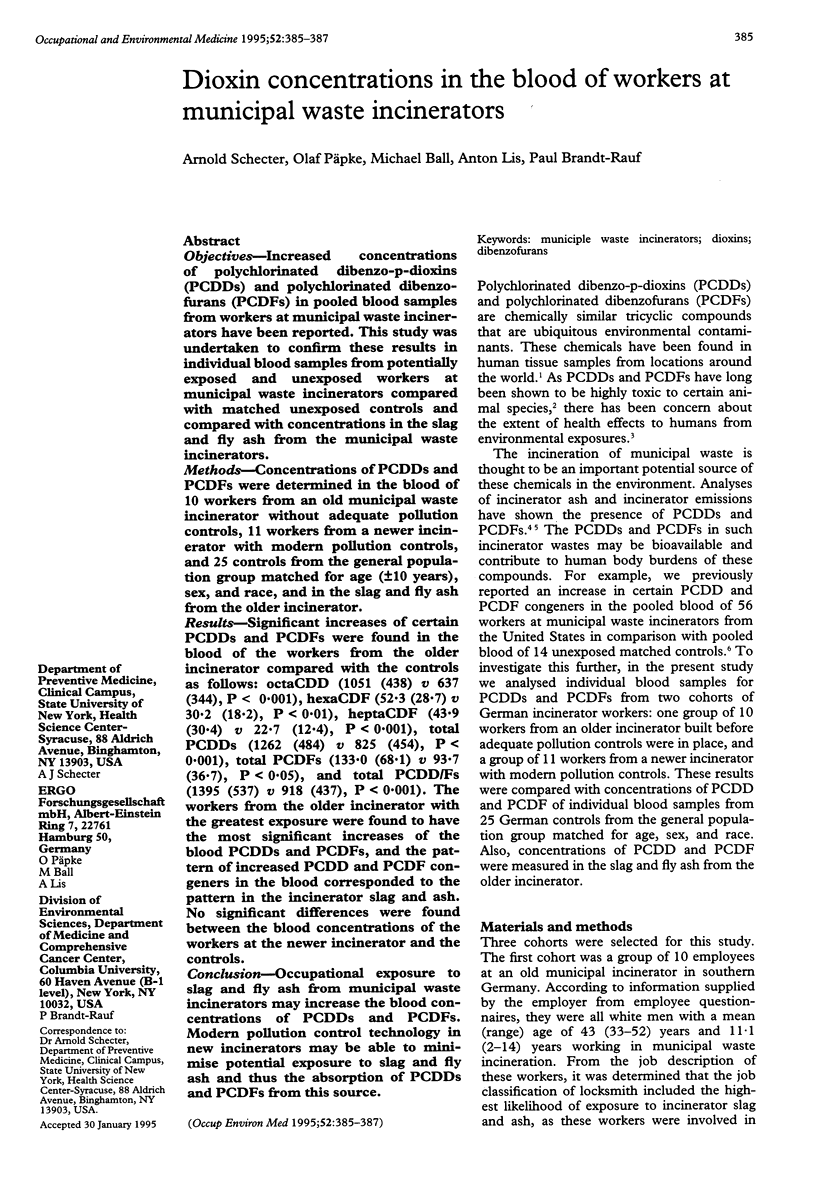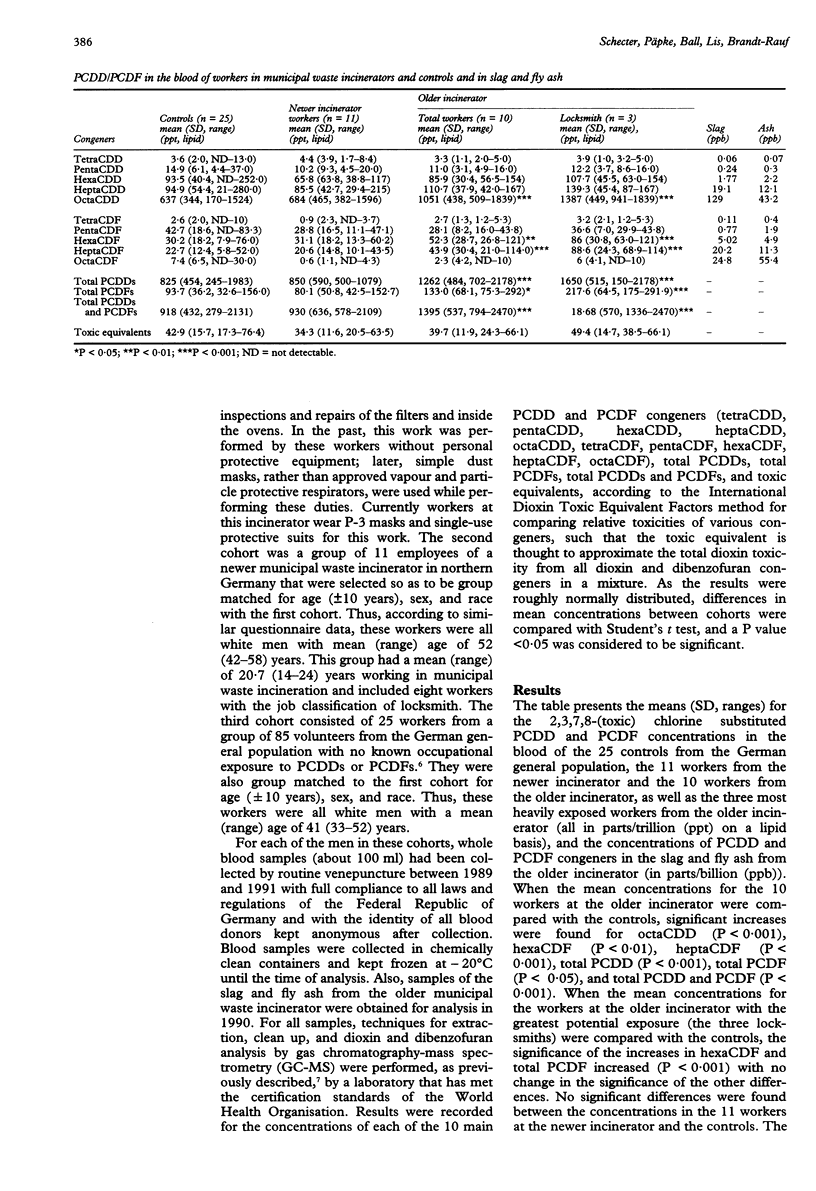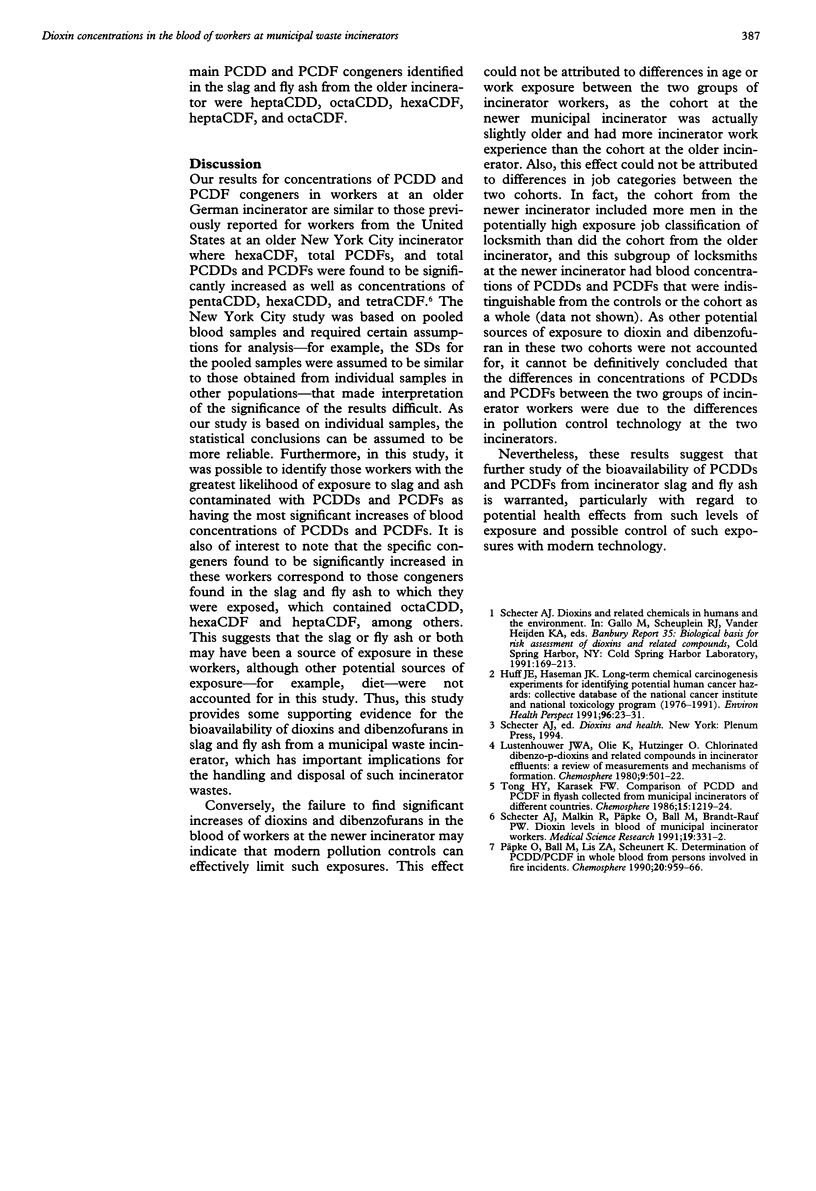Abstract
OBJECTIVES--Increased concentrations of polychlorinated dibenzo-p-dioxins (PCDDs) and polychlorinated dibenzo-furans (PCDFs) in pooled blood samples from workers at municipal waste incinerators have been reported. This study was undertaken to confirm these results in individual blood samples from potentially exposed and unexposed workers at municipal waste incinerators compared with matched unexposed controls and compared with concentrations in the slag and fly ash from the municipal waste incinerators. METHODS--Concentrations of PCDDs and PCDFs were determined in the blood of 10 workers from an old municipal waste incinerator without adequate pollution controls, 11 workers from a newer incinerator with modern pollution controls, and 25 controls from the general population group matched for age (+/- 10 years), sex, and race, and in the slag and fly ash from the older incinerator. RESULTS--Significant increases of certain PCDDs and PCDFs were found in the blood of the workers from the older incinerator compared with the controls as follows: octaCDD (1051 (438) v 637 (344), P < 0.001), hexaCDF (52.3 (28.7) v 30.2 (18.2), P < 0.01), heptaCDF (43.9 (30.4) v 22.7 (12.4), P < 0.001), total PCDDs (1262 (484) v 825 (454), P < 0.001), total PCDFs (133.0 (68.1) v 93.7 (36.7), P < 0.05), and total PCDD/Fs (1395 (537) v 918 (437), P < 0.001). The workers from the older incinerator with the greatest exposure were found to have the most significant increases of the blood PCDDs and PCDFs, and the pattern of increased PCDD and PCDF congeners in the blood corresponded to the pattern in the incinerator slag and ash. No significant differences were found between the blood concentrations of the workers at the newer incinerator and the controls. CONCLUSION--Occupational exposure to slag and fly ash from municipal waste incinerators may increase the blood concentrations of PCDDs and PCDFs. Modern pollution control technology in new incinerators may be able to minimise potential exposure to slag and fly ash and thus the absorption of PCDDs and PCDFs from this source.
Full text
PDF


Selected References
These references are in PubMed. This may not be the complete list of references from this article.
- BEGG N. D., SMELLIE E. W., WRIGHT J. Dust control in measles wards, with a note on sulphadiazine prophylaxis. Br Med J. 1947 Feb 8;1(4492):209–215. doi: 10.1136/bmj.1.4492.209. [DOI] [PMC free article] [PubMed] [Google Scholar]
- Huff J., Haseman J. Long-term chemical carcinogenesis experiments for identifying potential human cancer hazards: collective database of the National Cancer Institute and National Toxicology Program (1976-1991). Environ Health Perspect. 1991 Dec;96:23–31. doi: 10.1289/ehp.919623. [DOI] [PMC free article] [PubMed] [Google Scholar]


